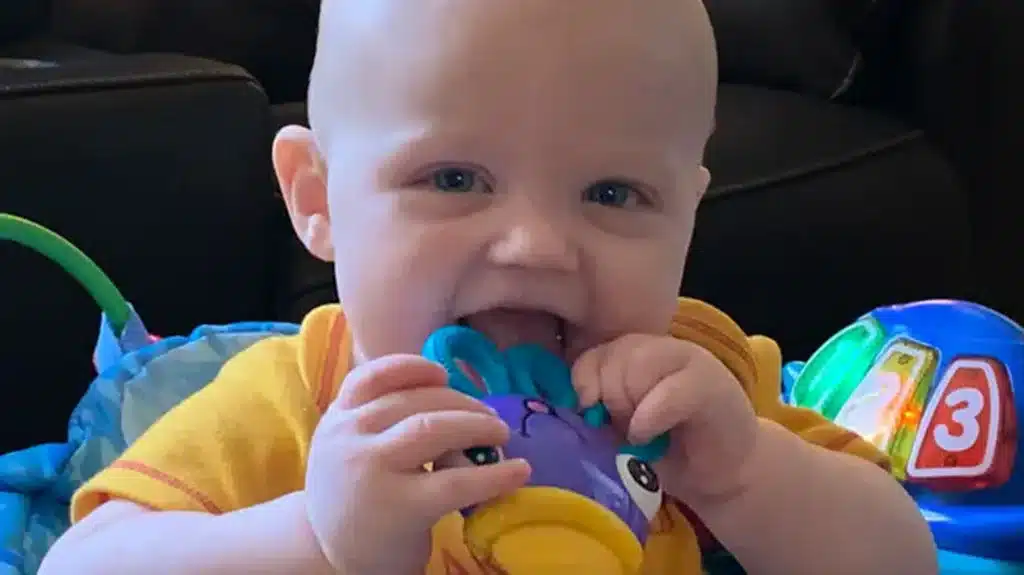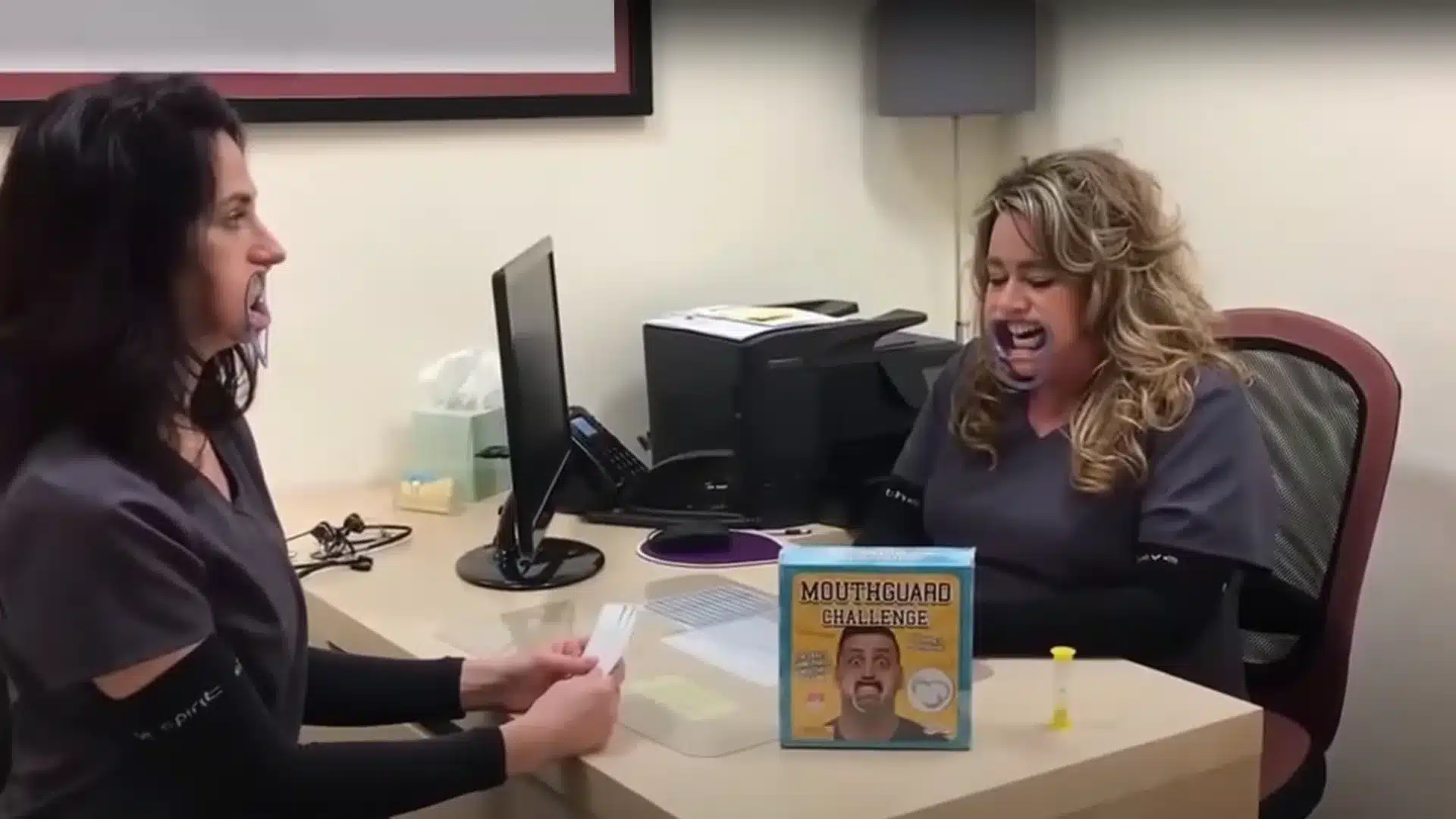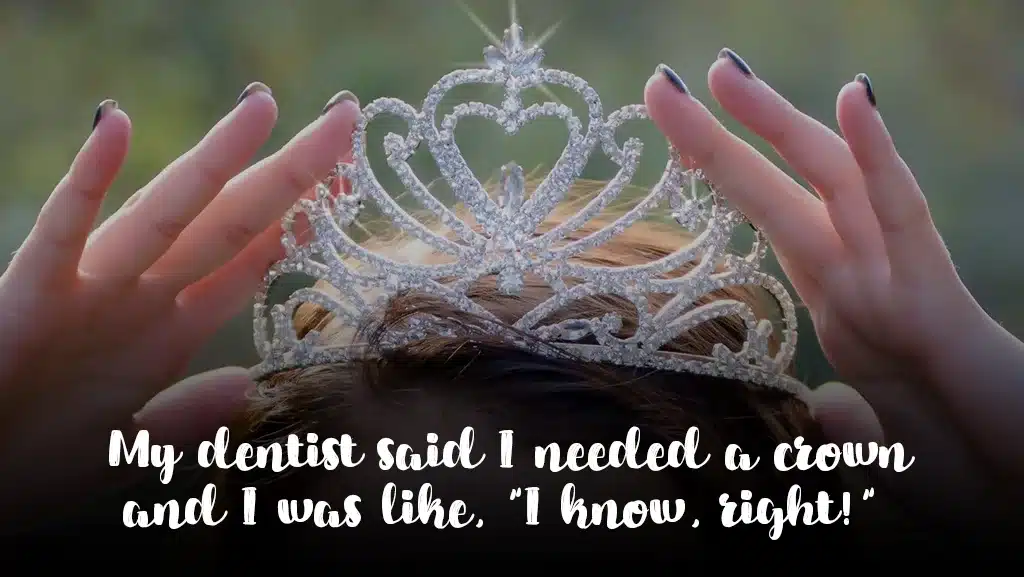Hi, Tooth Fans!
I hope you’re all doing okay and staying safe in this crazy time of quarantine! People are starting to go a little stir crazy. In fact, some of you may have never read our blog before, but since you’re stuck at home with nothing better to do, why not?
While there are many aspects of life that are a lot worse right now, it’s helpful to take a step back and see what positive notes can be found and look for things to be grateful for (like additional blog readership.) I, for one, am grateful for the additional time I’ve been able to spend with my new son, Riddle. When I went back to work after my maternity leave, I was saddened by the thought of missing some of Riddle’s milestones. Every new Mom wants to be there to hear her baby’s first words, see his first steps, witness his first run-in with the cat . . .
I was present at his first word, “Mama,” because he said it in the evening after work one day. While I’d love to say my kid is crazy advanced and is walking at 7 months, I haven’t quite seen his first steps yet. He stands with help, but no walking at this point. And now, in our state of quarantine, I have been lucky enough to see my child learn to push himself up on his hands and knees, crawl backwards, and you guessed it . . . get his first teeth!
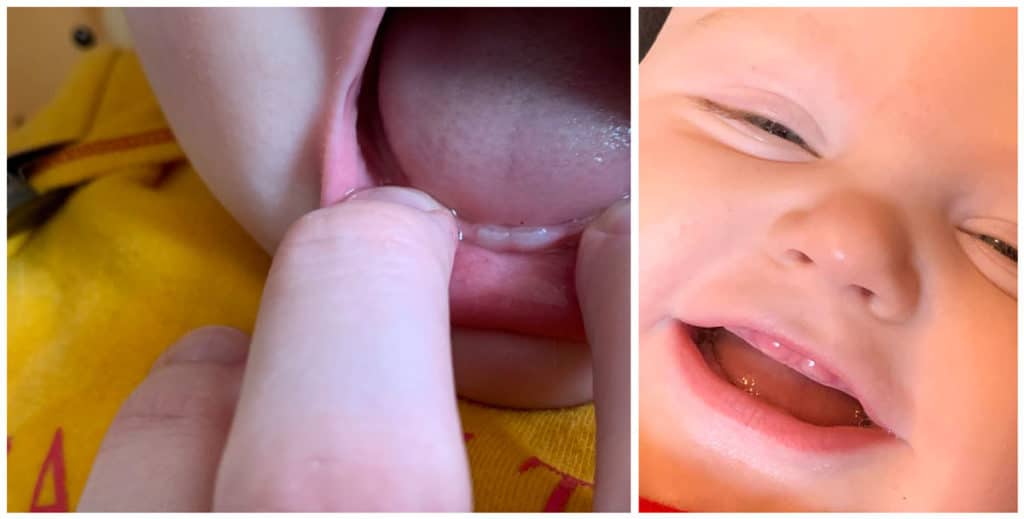
Now I know what you’re thinking – “Kids are usually beasts to be around when they’re teething because they’re so miserable! That seems more like a curse than a blessing!” But honestly, this kid has been pretty decent with his teeth coming through (knock on wood), at least the first ones.
I’m excited because (A) I’m a dentist and teeth are sort of my thing and (B) even if my kid does get miserable, it’s nice for him to have his mommy to help him. If anything, Riddle is lucky to have a dentist as a Mom because who better to understand the ins and outs of teething than a dentist? Not all kids are so fortunate. In fact, many children have suffered terribly due to a lack of understanding of the teething process.
Teething to Death?
Historically, teething has been attributed as the cause of a myriad of maladies over the years, everything from excessive drooling to fevers and diarrhea. As early as 440 B.C., Hippocrates was associating systemic symptoms like fever, convulsions, and diarrhea to teething, “especially when cutting the canine teeth and in those who are particularly fat and have constipated bowels.” But did you know that teething used to be listed as the cause of death of young babies? Over 10% of 19th century England childhood deaths were attributed to teething. In 1894 Dr. Marion Thrasher stated in a Journal of the American Medical Association article, “So deadly has it become, that one-third of the human family die before the twenty deciduous teeth have fully appeared.” (Deciduous teeth is just another name for baby teeth – also sometimes called milk teeth, temporary teeth, or primary teeth.)
He seemed to think that the practice of nursing infants, which had fallen “out of vogue” in his time in lieu of more artificial means of feeding children, in some way prevented the development of abnormal dentition in the past and that was why his generation was seeing such an increase in teething deaths. It turns out he was correct in the association between breastfeeding and proper arch development, but missed the mark on the cause of death. It’s hard to say exactly what the cause of death WAS in all those children, but as a dentist in 2020 I can tell you what it WASN’T: teeth. Modern science and years of clinical studies have proven that while teething may not be a particularly fun process, it is categorically NOT responsible for systemic illnesses, and symptoms like fever and diarrhea. It’s actually dangerous to link the two because real symptoms of serious illnesses can be dismissed as “he’s just teething” and result in devastating consequences.
Dr. Ian Swann, in a prospective study in 1979, followed 50 hospitalized children whose symptoms had initially been attributed to teething and found that 48 of those children had been diagnosed with an organic illness, some as serious as febrile convulsions and meningitis. If the underlying disease processes are not treated properly, death most certainly can ensue. And death certificates in England continued to identify teething as a cause of death until as late as 1979!
The Cure Is Worse Than The Disease
The remedies for teething historically are quite nasty themselves, and their extreme nature makes more sense now that we know parents thought their children would die from their teeth coming through.
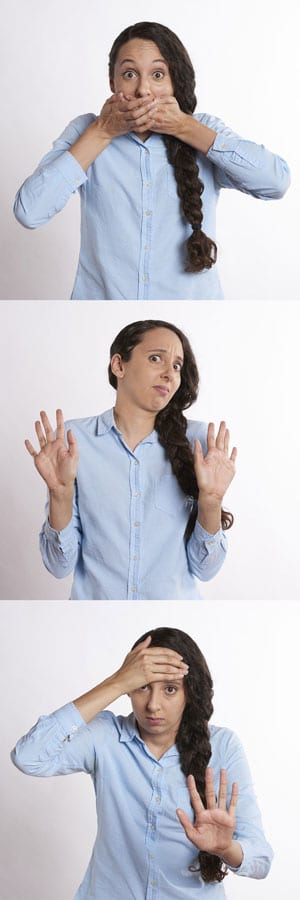
While today we encourage our little ones to rub their gums with textured silicone teething rings and necklaces, the medical community in the 1500’s decided to help their children’s teeth break through the gums by cutting them open with a lancet, even if the teeth weren’t close to coming through.
This article notes the method was developed by Ambroise Pare upon observing a dead child and trying to discern his cause of death: “When we diligently sought for the cause of his death, we could impute it to nothing else than the contumacious hardness of the gums…when we cut the gums with a knife we found all the teeth appearing…if it had been done when he lived, doubtless he would have been preserved.” <Sigh!> And so for many years, doctors took to slicing through the gums of young babies, multiple times if necessary, to “relieve” them of their teething trouble, doubtless before the modern age of infection control and discovery of antibiotics. They certainly were not doing these children any favors.
Cutting the gums was one means of soothing a baby’s sore gums, but other methods existed and exacerbated the problem, as well. Leeches were applied to the gums and to the jaw, though I’m not sure how they prevented the babies from swallowing them. Later on, alcohol and morphine were both used for controlling teething symptoms, and sometimes a combination of the two!
A popular (and deadly) teething remedy was concocted right here in Maine. Beginning in 1845, Mrs. Winslow’s Soothing Syrup was marketed to mothers that it “should always be used for children teething. It soothes the child, softens the gums, allays all pain, cures wind colic, and is the best remedy for diarrhoea.” Unbeknownst to the average consumer (as ingredients were not required to be listed on the packaging back then) it contained both alcohol and morphine. When used according to instructions, some children ingested 260mg morphine within 24 hours.
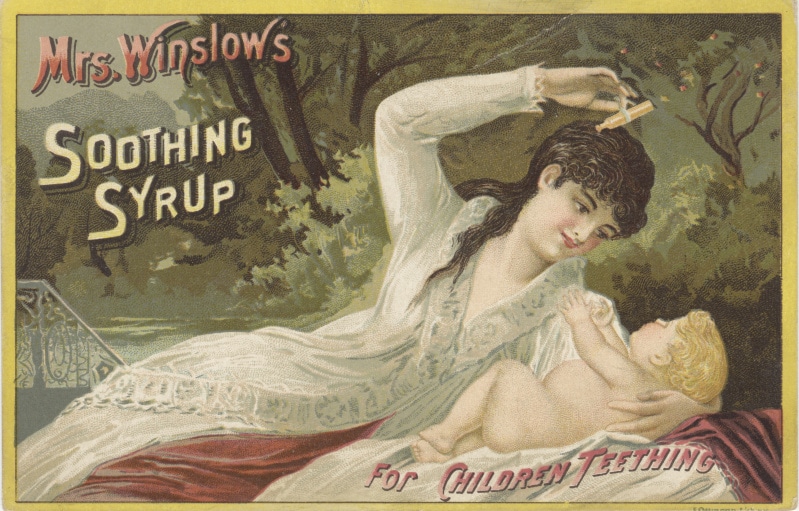
Both alcohol and morphine have respiratory depression as a main side effect, and this tonic likely killed more children than it helped. And according to a 1994 Pediatric Dentistry journal article: “The use of mercury based teething powders only ended in the United States and Great Britain in the mid-1950’s when the association between mercury administration and conditions such as acrodynia (pink disease) and nephrosis was established. It became embarrassingly obvious that deaths and permanent disabilities that had been attributed to teething were, in fact, due only to the remedy applied.”
Surely modern methods of dealing with teething are more evidence based and effective, right?
Not entirely. Even today there remains textbook and clinical assertions that teething is NOT responsible for conditions like fevers and diarrhea juxtaposed with parental and sometimes clinician’s anecdotal experiences that the two are related.
Well, maybe they are related, just not in the way we think. Six months of age is the average time of eruption of a baby’s first incisors, and this is also the age when their antibody protection from their mom starts to wear off. Baby’s immune system is starting to have to fight for itself at the same time that the gums are being torn open by sharp teeth, leading to an easy spot for bacteria and viruses to enter the body.
We recently discovered that modern treatment measures for teething pain relief are not awesome either. In 2018 the ADA reported reported that the Food and Drug Administration was warning against the use of benzocaine containing products for teething infants (products like Orajel which would numb the gums). The gel only lasts on the gums for a short time and the infant ends up swallowing a large amount of it over time, predisposing him or her to develop a rare condition called methemoglobinemia. Methemoglobinemia is when there is an abnormal amount of methemoglobin in the bloodstream, preventing proper oxygenation of the tissues, which can occasionally lead to death. Again, we don’t want the cure to be worse than the disease.
So What CAN We Do For Teething Babies?
First and foremost I’d like to reiterate that while babies can experience some discomfort with teething; serious irritability, fever, seizures, diarrhea, and a host of other symptoms should be investigated by your pediatrician and not dismissed as a side effect of teething.
Riddle has been relatively pleasant to be around, and when his gums are bothering him a bit I can tell because he’ll touch the area with his fingers and cry a little. At times like those I’ll give him a silicone-based teether with different textures for him to use to rub his gums. I also have several water-filled teething toys which we place in the refrigerator so can he put the cool surfaces to his gums.
And believe it or not, I circulate his 3 pacifiers in the freezer and this has been tremendously helpful for him. Children’s Tylenol is a pain reliever that’s relatively “safe” for kids, though personally we have not done that yet for Riddle. In the end it’s about keeping it simple, and contacting your physician or dentist when something simply doesn’t feel right.
This Too Shall Pass
Teething occurs for 2 years, friends, but thanks to better scientific knowledge and understanding our kids are sure to get through it. And we’ll all get through this quarantine too . . . hopefully in less than 2 years. For now, I’m going to go back to watching my kid grow teeth. And with any luck it won’t be too much longer until I can help you fix yours. 🙂
Love & What Doesn’t Kill Us Makes Us Stronger (Teething For Instance),



